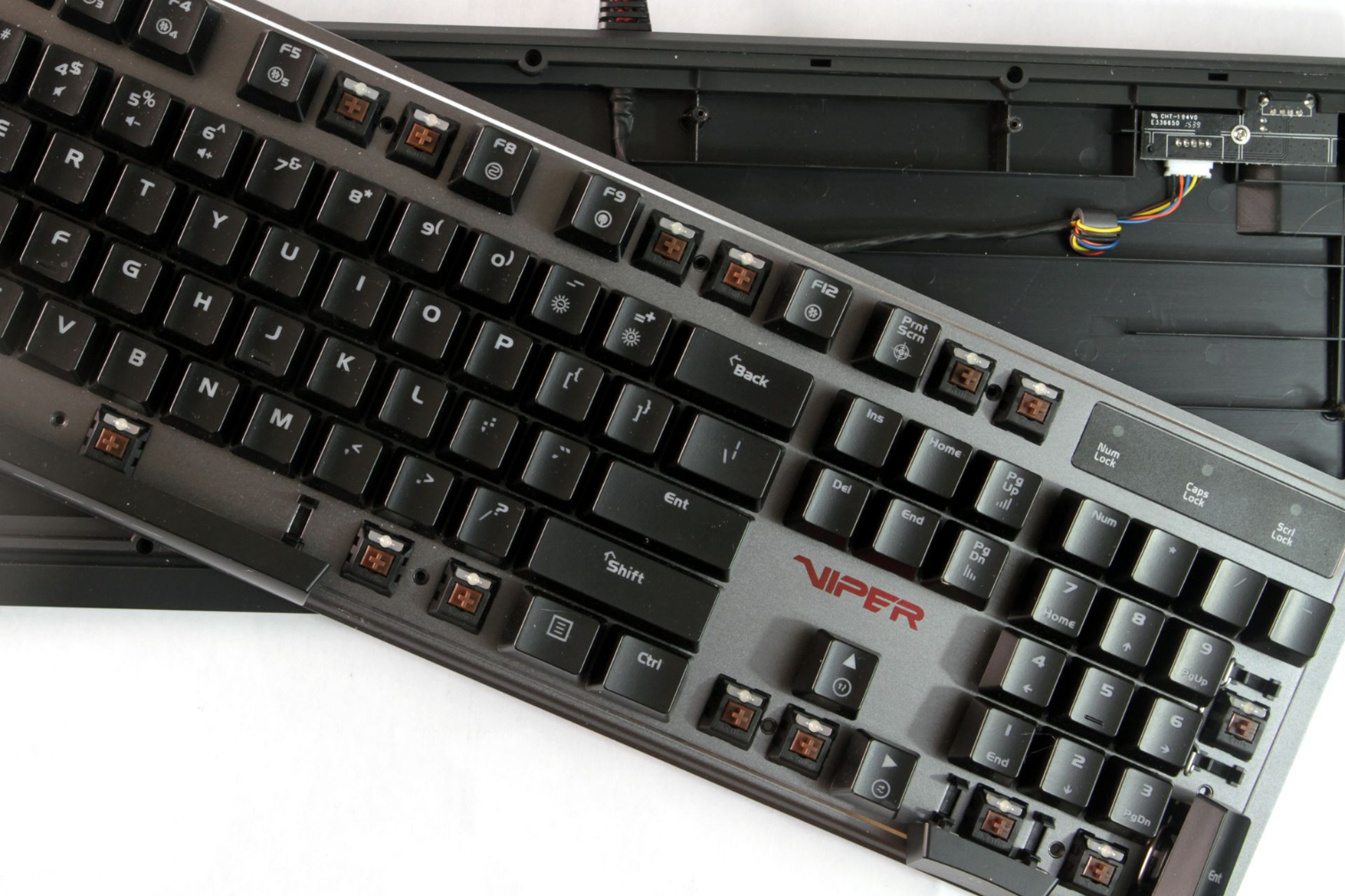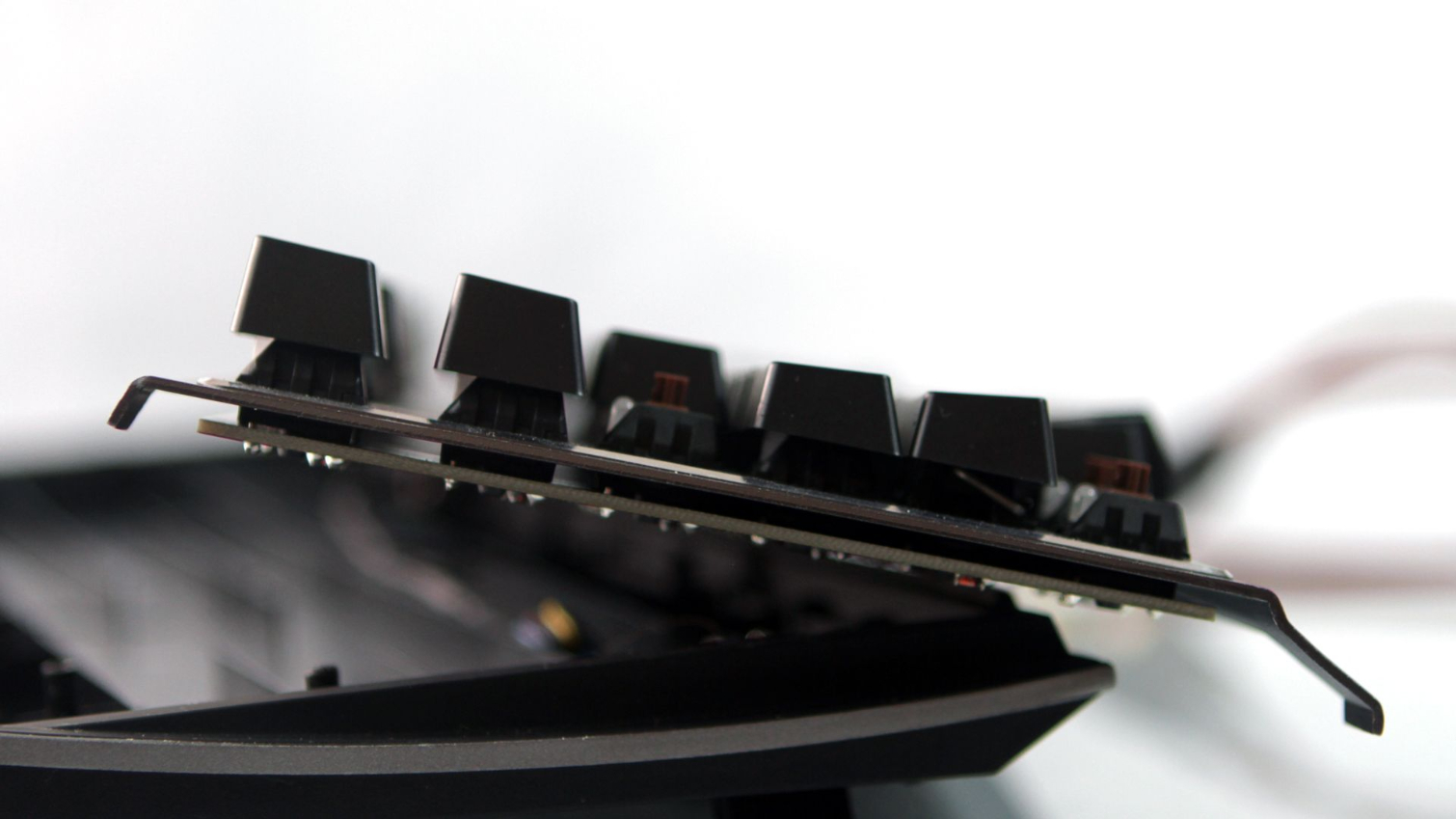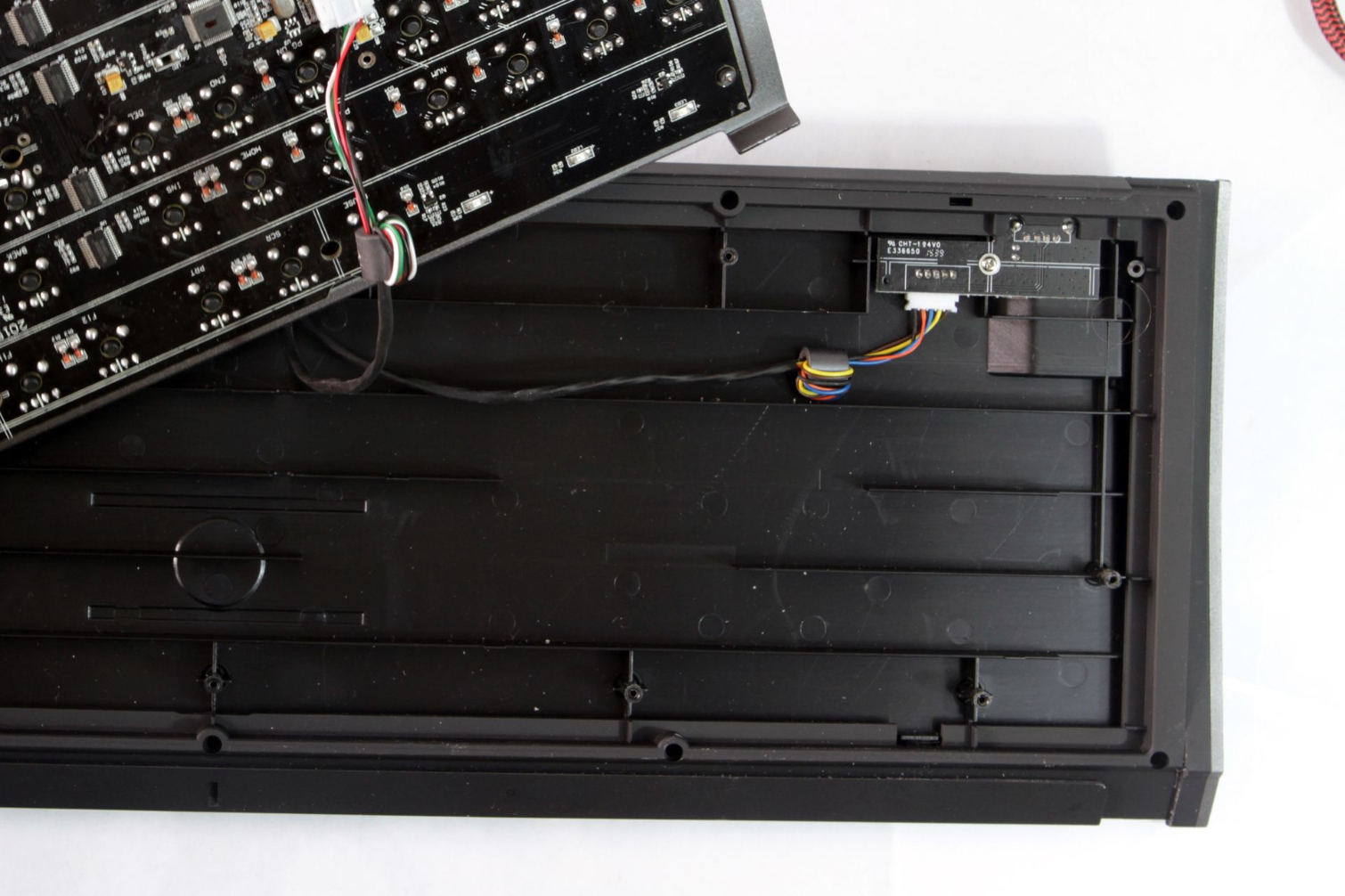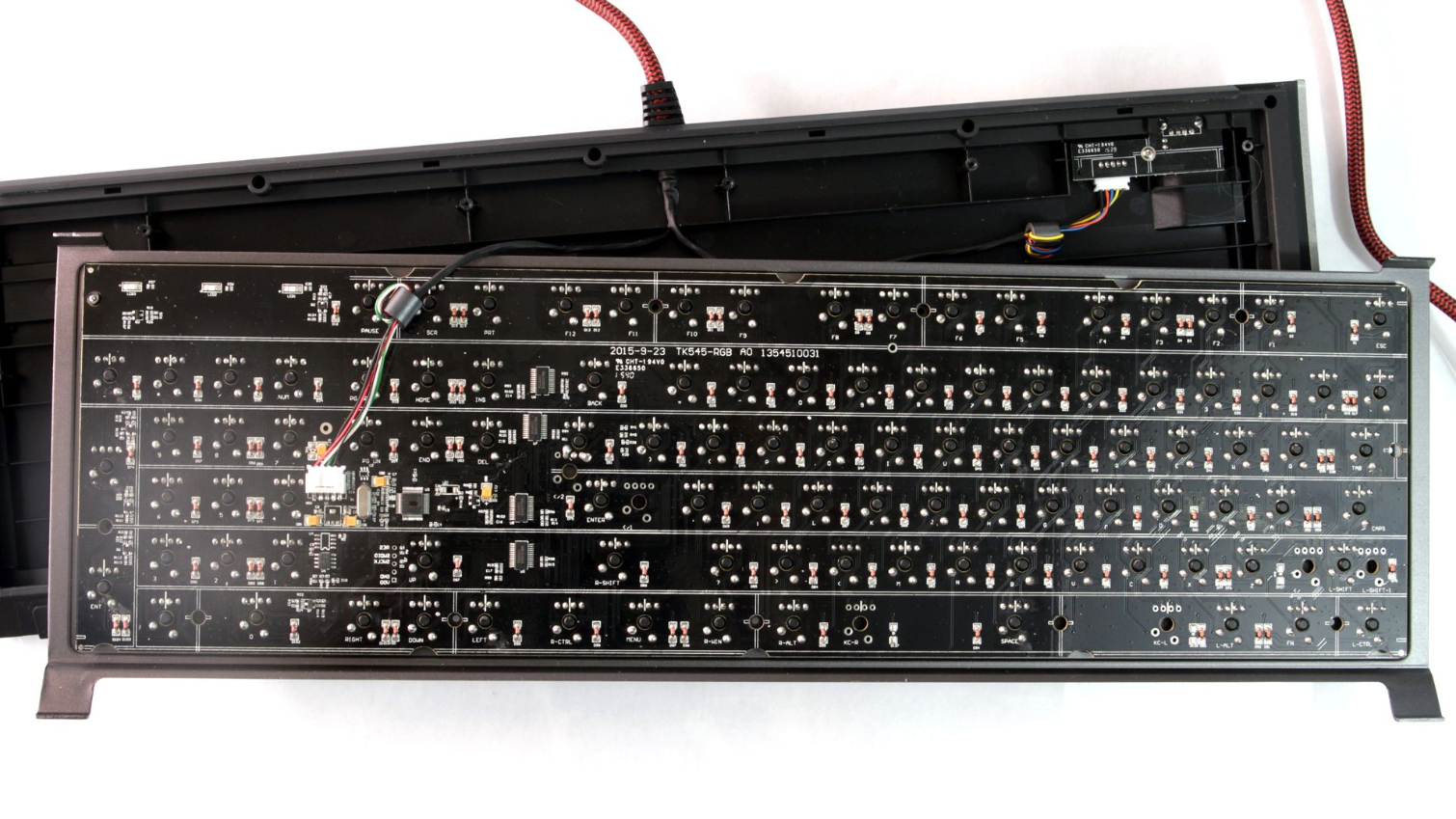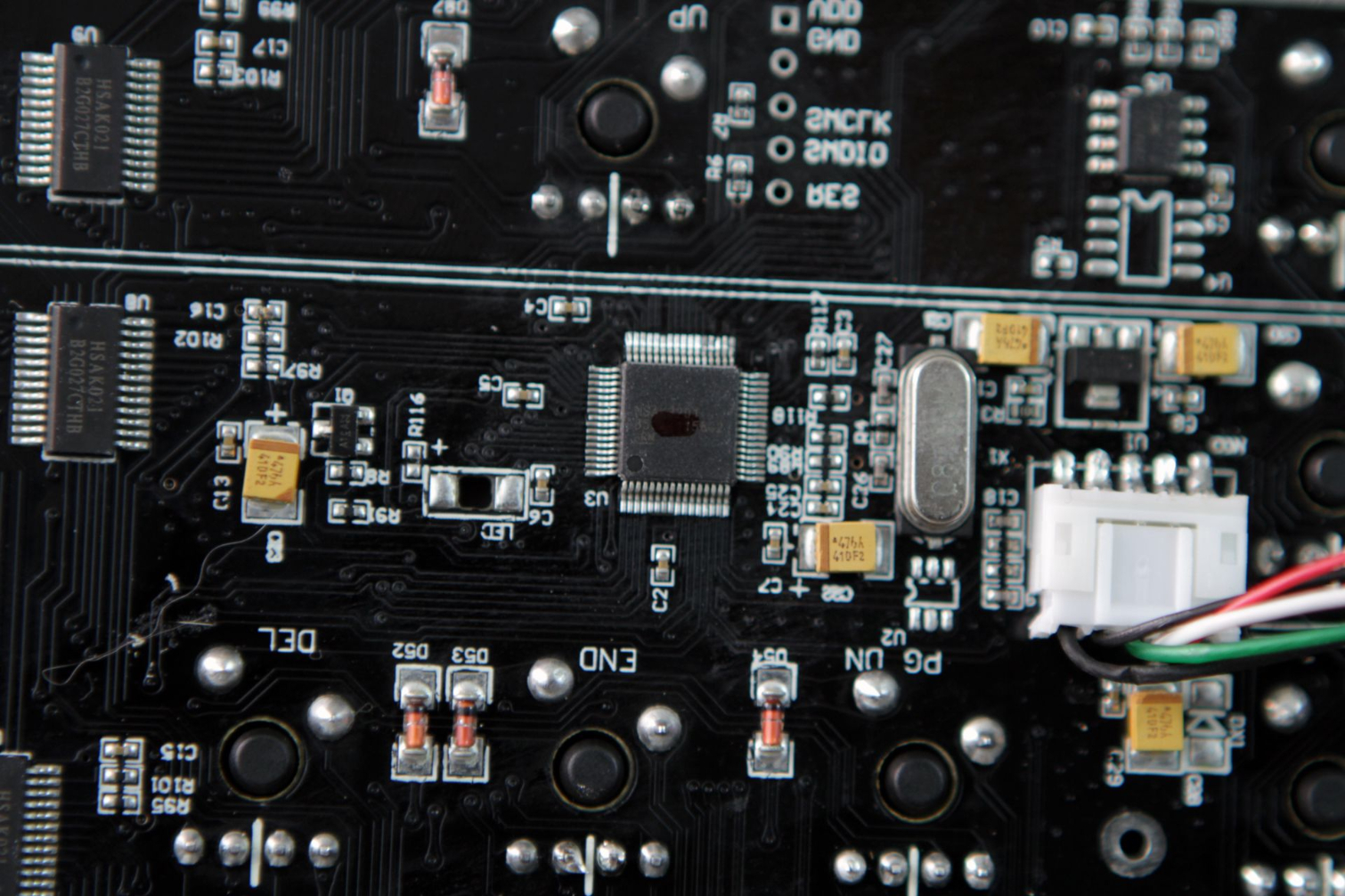Patriot Viper V760 Keyboard Review
Why you can trust Tom's Hardware
Teardown
The V760 feels reasonably solid when you type, and that’s due to the aluminum backplate design. The metal is only so sturdy, though; without trying too hard, you can feel some flexion when you pick up the keyboard and twist it. The backplate is rather unique from others you’ll see, as we noted, because although it’s one solid piece of aluminum, the topmost portion of it has a beveled edge. The total thickness of the plate is about 2.6mm, although at the edge, it’s just approximately 1.6mm. The bottom of the chassis is plastic.
The V760 makes use of Costar-style stabilizers. We’ve seen some variation in the quality of such stabs, mainly due to the size of the metal bars. These are relatively thick, though, and I found their performance to be excellent.
Like many top plate designs, the screws on the V760 are hidden by the key caps. Of note, they’re Torx screws (T6, specifically), and there are 11 of them.
Some keyboards come apart easily enough, but this is not really one of them. Patriot clearly does not want you cracking this thing open. And crack it I did--there was at least one small screw under the top plate, holding the top plate to the PCB, and I accidentally broke the plastic housing of it when I was (apparently not so) gingerly wriggling the top plate off.
That is to say, don’t try this at home lest you want to risk bending the top plate and/or voiding your warranty.
Inside, the V760 shows simple construction, in four pieces: a plastic bottom and rubberized plate nestled into it, the PCB, and a metal top plate. (The PCB and top plate are attached, because the switches are plate-mounted.) There’s also a USB assembly on the right side; it’s screwed firmly into place, so it won’t wiggle at all. The USB assembly wire and the wire from the PCB feed into the single cable assembly that extends from the back of the chassis. The cable is held in place by a sturdy, non-removable rubber housing.
Looking at the PCB, note that the MCU is an ARM HSAK3201, and there are four LED controllers (HSAK021). We were unable to locate specifications on either.
Get Tom's Hardware's best news and in-depth reviews, straight to your inbox.
The soldering on the PCB is somewhat uneven. There’s a tiny bit of flux residue sprinkled here and there, and many of the welds inconsistent. For example, some are globbed on a little thick, and others show a small amount of sloppiness. None of the soldering appears poor enough to threaten performance or key rollover, but the inconsistency is worth noting.
MORE: Best Deals
MORE: How We Test Mechanical Keyboards
MORE: Mechanical Keyboard Switch Testing Explained
MORE: All Keyboard Content
Seth Colaner previously served as News Director at Tom's Hardware. He covered technology news, focusing on keyboards, virtual reality, and wearables.
-
0451 TH wrote several news articles about the XMIT Hall Effect RGB keyboard. The question is not "Why are there so many commodity keyboards?" but rather, "Why do you keep reviewing commodity keyboards when you have something much more interesting lying around?"Reply -
scolaner Reply19597763 said:TH wrote several news articles about the XMIT Hall Effect RGB keyboard. The question is not "Why are there so many commodity keyboards?" but rather, "Why do you keep reviewing commodity keyboards when you have something much more interesting lying around?"
That's a fair question. The answer is nuanced. Our goal as a publication is not simply to review the coolest stuff; we want to examine as much of each market as possible--the gear people are spending their hard-earned money on, and the gear that stands out as truly remarkable. Sometimes that means reviewing less sexy gear--as you (probably correctly) call them, "commodity keyboards". Because maybe the commodity stuff is actually really great. Maybe it's garbage. But we won't know until we review them, and in the meantime, people are buying them.
Further, we're not just in the business of reviews, we're in the business of *comparative* reviews. So taking a look at a bigger range of the market means we can do a better job of comparing these devices to one another.
Finally, fear not--there's more diversity and some really interesting stuff coming soon. :) And we'll put the XMIT Hall Effect in the queue as soon as he sends me one! :D -
demonkoryu A fully programmable RGB mechanical KB for 90 bucks? Is there any competing product at that price?Reply -
bgunner One thing that struck me a a possibly problematic is the the keyboard shortcut of FN + Pause/Break to reset the keyboard to factory settings. I don't know about the rest of the keyboard users, as if there are many other options, but sometimes when a program freezes my PC I get irritated and start mashing buttons with both hands. Wiping my settings accidentally because I'm frustrated would send me to the other room for an hour to cool down. A button or switch on the backside next to the wire or USB port would be a great addition to stop the double handed freak out because I'm an idiot move.Reply
A great article with tons of information. Kudos to you for doing a great job with it. After reading your previous article on How you test the keyboard switches I was slightly worried that the graphs would be difficult to grasp but your explanations relieved that worry. -
eojhet I bought this keyboard back in December for $80. There was nothing else with this feature set for that sum of money. I need a 10 key on the right side, so Corsair didn't cut it. I love this keyboard, I think the brown switches are beautiful and so is the lighting. I only wish it matched with my Razer mouse and pad, but I can't pay the prices they want for their Chroma keyboards, so screw it. Highly recommended.Reply -
zthomas i'm on my fourth mech keyboard.. the pad has to have a volume wheel.. for me to even consider.. this flashy lighted board..Reply
